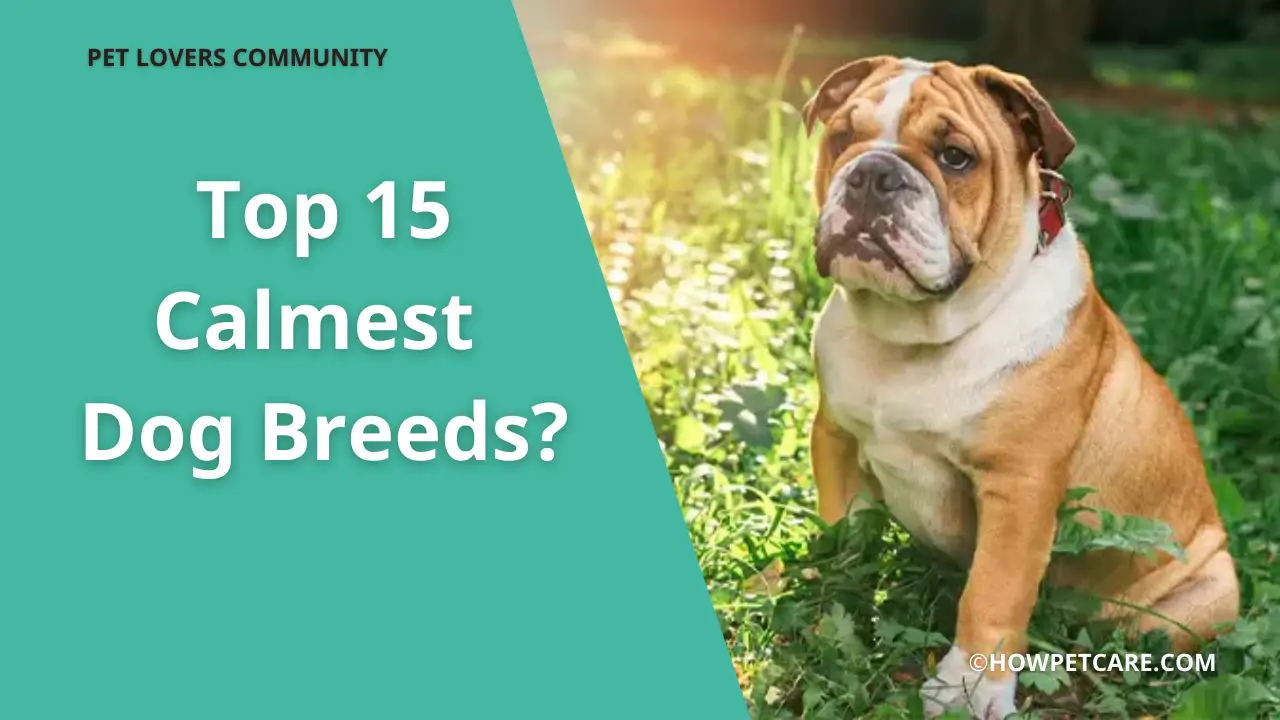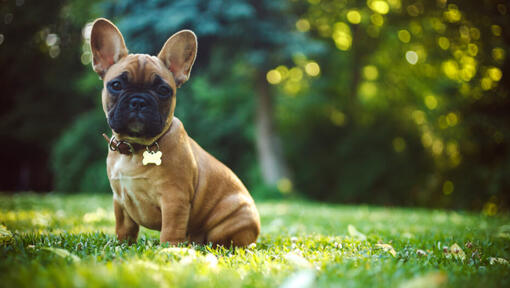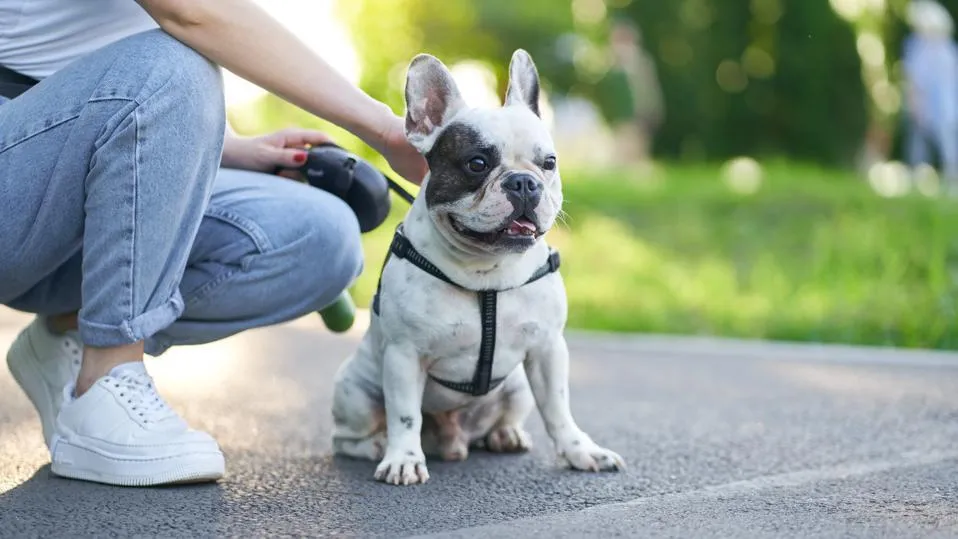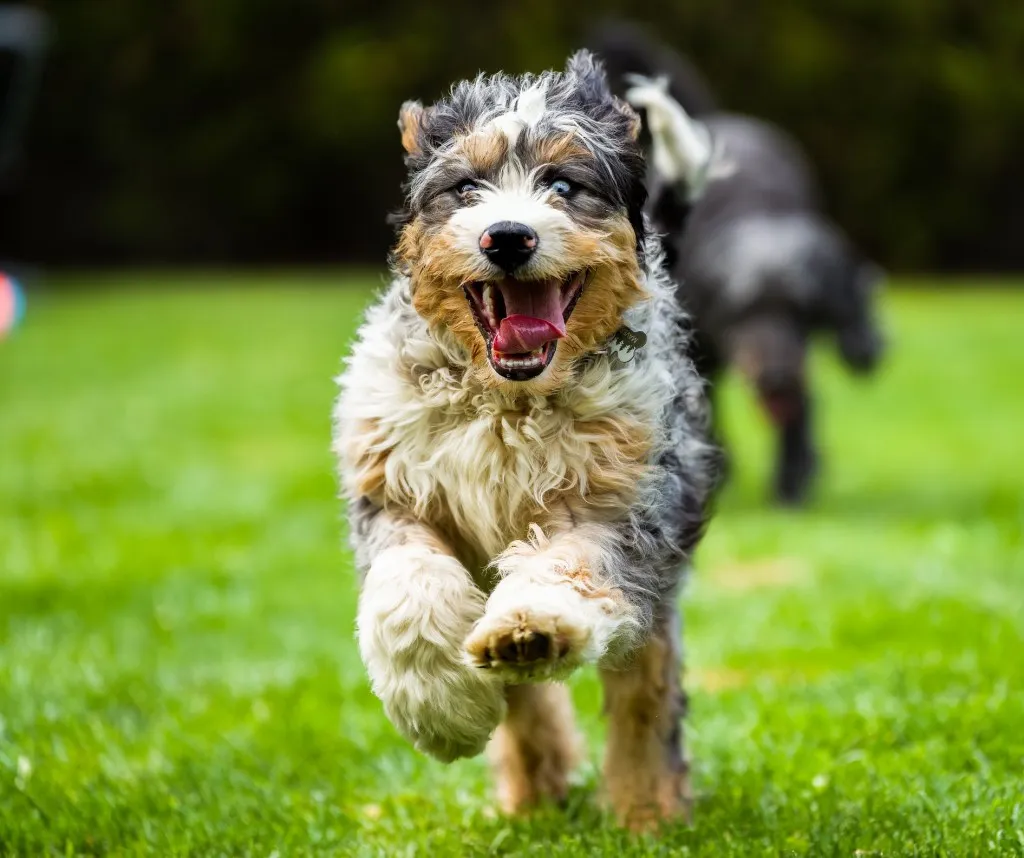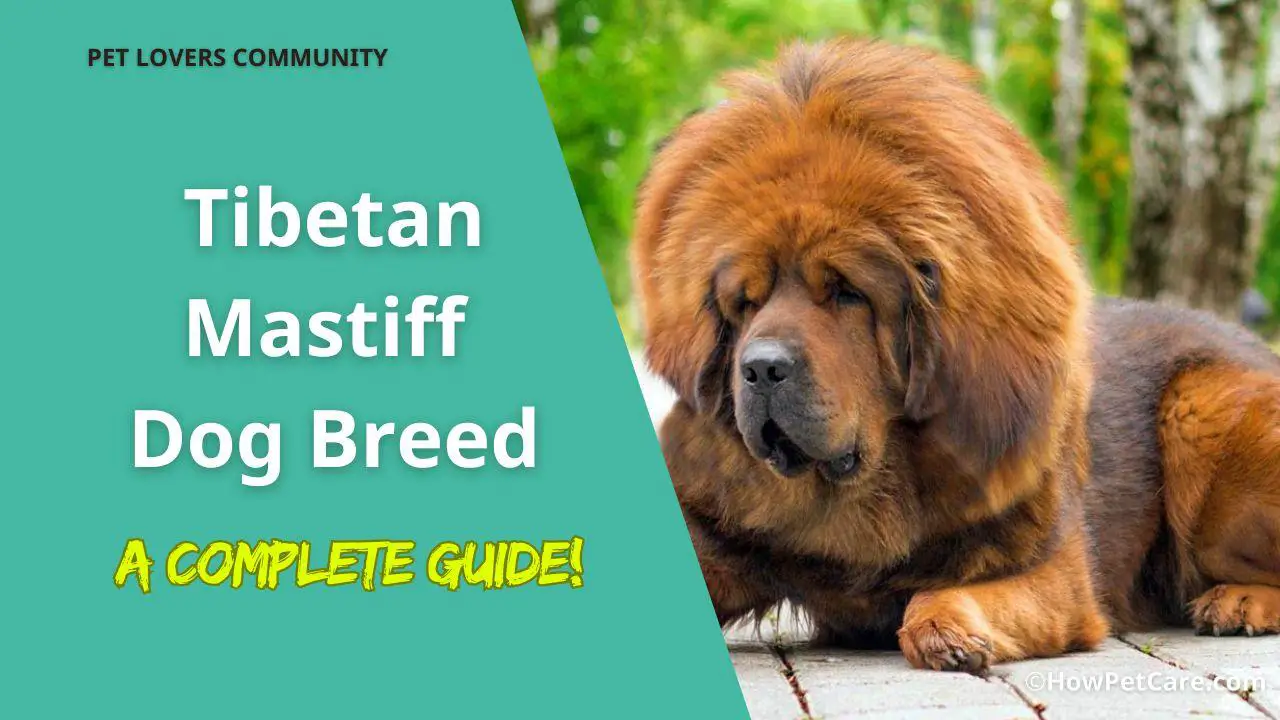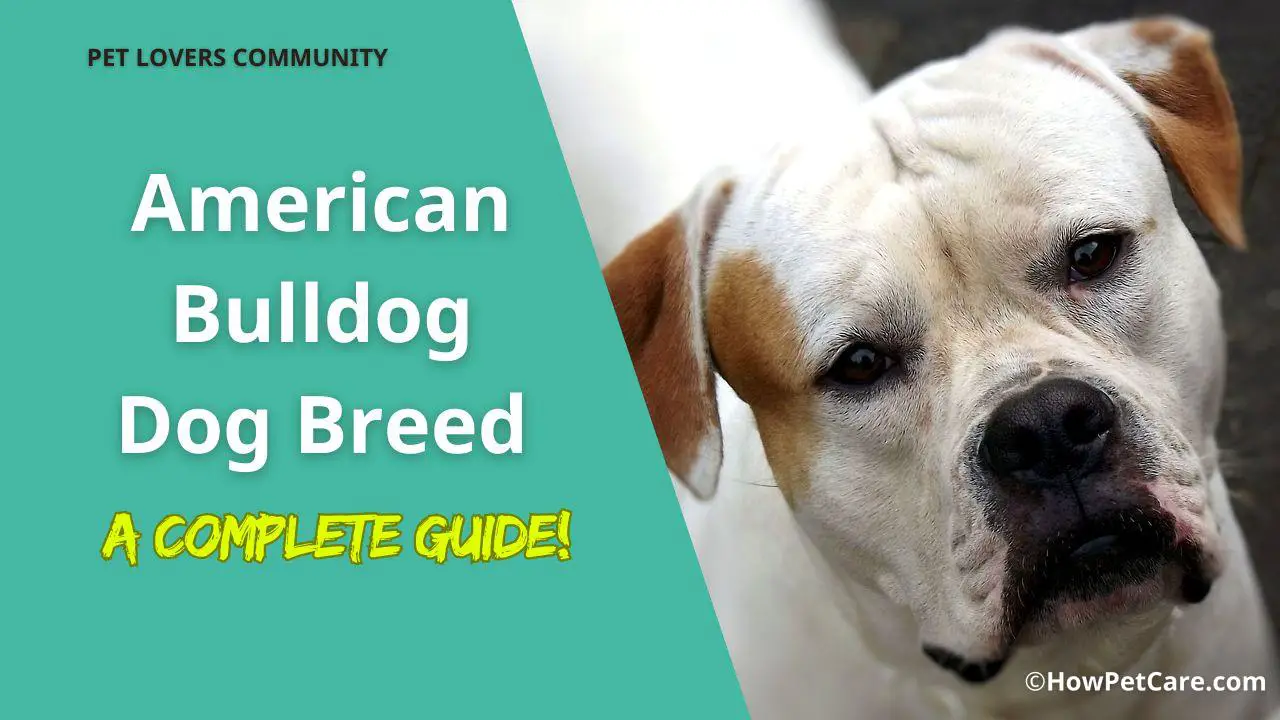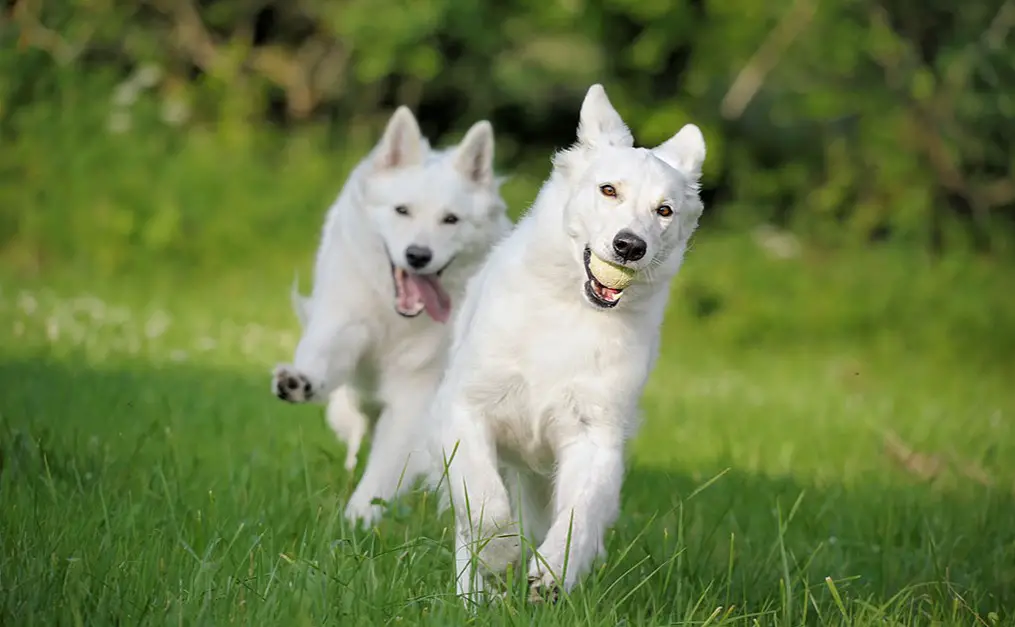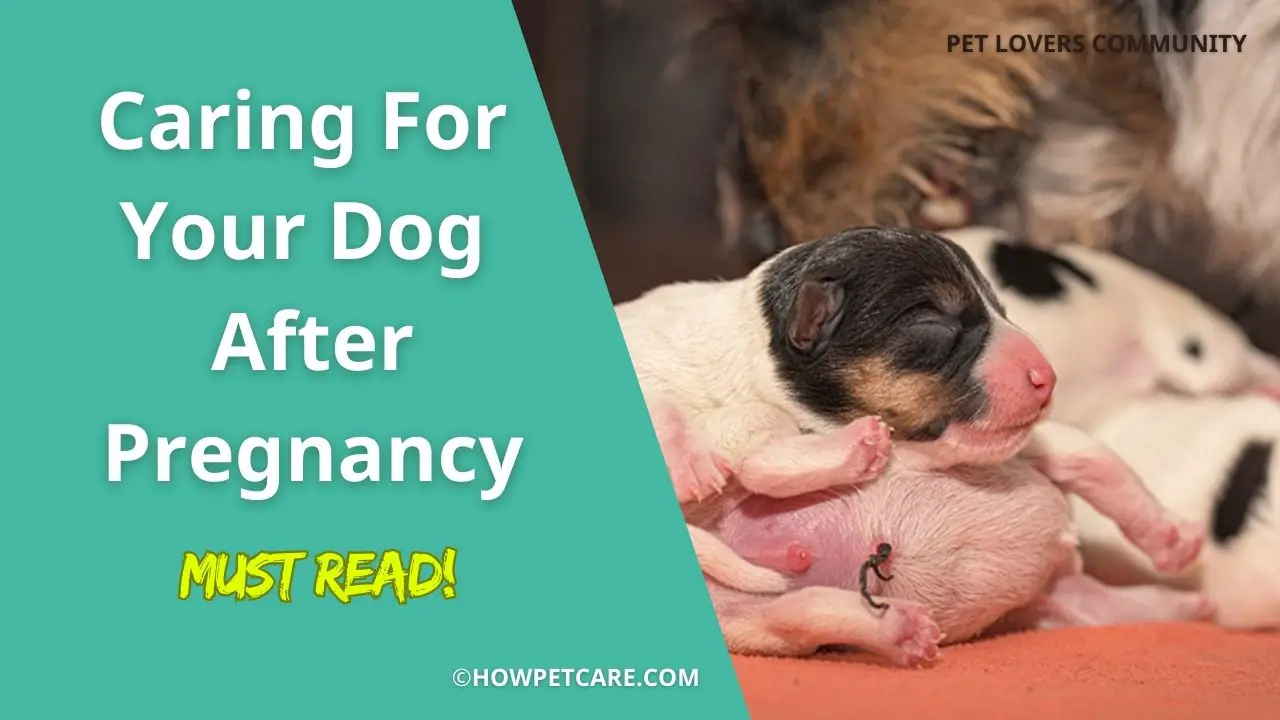Are you searching for the calmest dog breeds to match a peaceful lifestyle?
Discover the top 10+ breeds known for their serene and composed nature, perfect for a relaxed home environment.
Find the ideal companion who will bring tranquility to your life.
Introduction to Calm Dog Breeds
The world of dog breeds is vast and diverse, with each breed offering unique characteristics and temperaments.
Among these, calm dog breeds stand out for their gentle nature and relaxed demeanor.
These breeds are often sought after for their ability to adapt to various living situations and their compatibility with different lifestyles.
The Importance of Choosing the Right Dog Breed
Selecting the right dog breed is a crucial decision that can significantly impact both the owner’s and the dog’s quality of life.
When considering a calm breed, it’s essential to understand that calmness doesn’t equate to a lack of personality or energy.
Rather, these breeds often exhibit a balanced temperament that aligns well with a more relaxed lifestyle.
Calm dog breeds are particularly suitable for:
- First-time dog owners who may be overwhelmed by high-energy breeds
- Seniors looking for companionship without the demands of an overly active pet
- Families with young children who need a patient and gentle furry friend
- Individuals living in apartments or small spaces where a quieter dog is preferable
- People with busy lifestyles who can’t commit to extensive exercise routines
By choosing a calm breed, owners can enjoy the benefits of canine companionship without the stress that sometimes comes with more energetic or high-maintenance dogs.
This match can lead to a more harmonious relationship between pet and owner, fostering a peaceful home environment.
Understanding Calmness in Dogs
Calmness in dogs is not just about inactivity or laziness.
It’s a complex trait influenced by genetics, breeding, and individual personality. A calm dog typically displays:
- A relaxed body posture
- An ability to settle down easily
- Less reactivity to external stimuli
- A gentle approach to interactions with humans and other animals
- Lower exercise requirements compared to more active breeds
It’s important to note that even within calm breeds, individual dogs may vary in their temperament.
Factors such as upbringing, socialization, and training play significant roles in shaping a dog’s overall demeanor.
While breed characteristics provide a general guide, each dog is unique and may exhibit varying levels of calmness.
Understanding the nuances of canine calmness helps prospective owners set realistic expectations.
A calm dog breed doesn’t mean a dog that never needs exercise or mental stimulation.
These breeds still require proper care, attention, and activities tailored to their energy levels and needs.
Characteristics of Calmest Dog Breeds
Calm dog breeds share certain traits that set them apart from their more energetic counterparts.
These characteristics contribute to their reputation as peaceful and easy-going companions.
Understanding these traits can help potential owners make informed decisions when choosing a dog that fits their lifestyle and preferences.
Physical Traits that Indicate Calmness
While calmness is primarily a behavioral trait, certain physical characteristics are often associated with more relaxed dog breeds:
Body Size and Build: Many calm breeds tend to have a solid, sturdy build.
This doesn’t mean all large dogs are calm, but breeds like the Great Dane and Newfoundland are known for their gentle giant status.
Their size often contributes to a more laid-back attitude, as they don’t feel the need to be constantly on the move.
Facial Features: Calm breeds often have soft, expressive eyes and relaxed facial muscles.
Breeds like the Basset Hound, with their droopy eyes and long ears, exemplify this trait.
These features can give the dog a perpetually serene expression, reflecting their inner tranquility.
Coat Type: While not a strict rule, many calm breeds have medium to long coats that require regular grooming.
The act of grooming can be a calming experience for both dog and owner, reinforcing the breed’s peaceful nature.
Examples include the Cavalier King Charles Spaniel and the Tibetan Spaniel.
Movement Patterns: Calm breeds often move with a deliberate, unhurried gait.
They’re less likely to be seen bouncing or darting around erratically.
This measured movement is evident in breeds like the English Bulldog, known for its steady, ambling walk.
Behavioral Traits that Promote Tranquility
The true essence of a calm dog breed lies in its behavioral characteristics.
These traits make them ideal companions for those seeking a peaceful pet:
Adaptability: Calm breeds are typically highly adaptable to different living situations.
They can be content in small apartments or large homes, making them versatile pets for various lifestyles.
This adaptability stems from their easy-going nature and ability to remain relaxed in different environments.
Low Reactivity: One of the hallmarks of calm dog breeds is their low reactivity to external stimuli.
They’re less likely to bark excessively at every sound or become overly excited by routine activities.
This trait makes them excellent neighbors and suitable for living in close quarters with others.
Patience: Calm breeds often exhibit remarkable patience, especially with children and other pets.
This makes them ideal family dogs, as they can tolerate the sometimes unpredictable behavior of young children without becoming stressed or agitated.
Affectionate Nature: Many calm breeds are known for their affectionate and loving personalities.
They often enjoy cuddling and being close to their owners, providing comfort and companionship without being overly demanding.
Independent yet Social: While calm breeds enjoy human company, they’re often comfortable being alone for reasonable periods.
This balance of independence and sociability makes them suitable for owners who work outside the home but still want a loving pet to greet them upon return.
Trainability: Contrary to the misconception that calm dogs are less intelligent, many relaxed breeds are highly trainable.
Their composed nature often allows them to focus better during training sessions, making them responsive to commands and eager to please their owners.
Low Exercise Needs: While all dogs require some form of exercise, calm breeds typically have lower energy levels and are satisfied with moderate activity.
A leisurely walk or play session is often sufficient to meet their physical and mental stimulation needs.
Stress Resistance: Calm dog breeds generally have a higher threshold for stress.
They’re less likely to become anxious or agitated in new situations or when faced with changes in their environment.
This resilience makes them adaptable to various family dynamics and living conditions.
By understanding these physical and behavioral traits, potential dog owners can better assess whether a calm breed aligns with their expectations and lifestyle.
These characteristics contribute to the overall peaceful temperament that makes calm dog breeds so desirable as companions in today’s fast-paced world.
Overview of the Top Calm Dog Breeds
In this section, we’ll delve into some of the most renowned calm dog breeds, exploring their unique characteristics, temperaments, and what makes them ideal for those seeking a tranquil canine companion.
These breeds have earned their reputation for being gentle, affectionate, and easy to live with, making them popular choices for a wide range of dog lovers.
The Cavalier King Charles Spaniel

The Cavalier King Charles Spaniel is often hailed as one of the gentlest and most affectionate dog breeds.
Known for their silky coat and expressive eyes, these small dogs embody the perfect balance of regal charm and loving companionship.
Temperament and Personality: Cavaliers are renowned for their sweet and gentle nature.
They have an innate ability to sense their owner’s emotions, often offering comfort during times of stress.
Their calm demeanor makes them excellent therapy dogs and ideal companions for seniors or individuals with anxiety.
These spaniels are adaptable and can thrive in various living situations, from spacious homes to cozy apartments.
Their easygoing nature allows them to get along well with children, other pets, and even strangers, making them a versatile choice for families of all sizes.
Exercise and Care: Despite their calm nature, Cavaliers do enjoy moderate exercise. A daily walk and some playtime are usually sufficient to keep them happy and healthy.
Their exercise needs are not demanding, making them suitable for less active owners or those with limited mobility.
Grooming is an important aspect of caring for a Cavalier. Their long, silky coat requires regular brushing to prevent matting and to maintain its lustrous appearance.
This grooming time can serve as a bonding experience, further strengthening the relationship between dog and owner.
Health Considerations: Potential owners should be aware of some health issues common to the breed, such as heart problems and syringomyelia.
Regular veterinary check-ups and a healthy lifestyle can help mitigate these risks, ensuring a long and happy life for these gentle companions.
The Basset Hound

With their droopy eyes, long ears, and short legs, Basset Hounds are instantly recognizable and beloved for their laid-back nature.
These dogs are the epitome of a calm and easygoing breed, making them excellent family pets and companions for those seeking a relaxed canine friend.
Personality Traits: Basset Hounds are known for their patient and gentle temperament. They have a calm demeanor that makes them excellent with children and other pets.
Their low-key nature means they’re content to lounge around the house, making them ideal for less active owners or apartment living.
Despite their relaxed attitude, Basset Hounds have a keen sense of smell and were originally bred for hunting.
This heritage gives them a bit of stubbornness, which can be endearing but also requires patient training.
Exercise and Lifestyle Needs: While Basset Hounds are generally low-energy dogs, they still benefit from regular exercise to maintain a healthy weight.
Short walks and playtime in a fenced yard are usually sufficient to keep them happy and healthy.
Their exercise needs are modest, making them suitable for owners who prefer a more sedentary lifestyle.
It’s important to note that Basset Hounds have a tendency to gain weight if overfed and under-exercised.
Maintaining a balanced diet and ensuring regular activity is crucial for their overall health and longevity.
Grooming and Care: Basset Hounds have a short, dense coat that’s relatively easy to maintain.
Regular brushing helps control shedding and keeps their coat healthy.
Their long ears require special attention to prevent infections, and their facial wrinkles should be cleaned regularly to avoid skin issues.
These gentle giants in a small package are known for their melodious howl, which can be both charming and challenging for owners.
Early training can help manage their vocalization, ensuring they remain good neighbors in any living situation.
The English Bulldog

The English Bulldog, with its distinctive wrinkled face and sturdy build, is a breed that epitomizes calmness and strength.
Often referred to simply as Bulldogs, these dogs have a gentle and patient nature that belies their tough appearance.
Temperament and Characteristics: English Bulldogs are known for their docile and friendly temperament.
They are remarkably calm and easygoing, making them excellent companions for families, singles, and seniors alike.
Their patient nature makes them particularly good with children, as they can tolerate the sometimes overzealous attention of young kids.
These dogs are not typically high-energy and are content with moderate exercise.
Their relaxed attitude means they’re often happy to lounge around the house, making them ideal for apartment living or for owners who prefer a less active lifestyle.
Exercise and Health Needs: While Bulldogs are generally low-energy, they still require regular exercise to maintain a healthy weight and good overall health.
Short walks and play sessions are usually sufficient to meet their activity needs.
However, it’s important to be mindful of their exercise routine, especially in hot weather, as their flat faces can make breathing difficult.
Bulldogs are prone to certain health issues, particularly those related to their brachycephalic (flat-faced) structure.
Owners should be aware of potential breathing difficulties, skin fold infections, and joint problems.
Regular veterinary check-ups and a balanced diet are crucial for maintaining their health.
Grooming and Care: The English Bulldog’s short, smooth coat is relatively easy to maintain with regular brushing.
However, their facial wrinkles require special attention to prevent skin infections.
Cleaning the folds regularly and keeping them dry is an essential part of Bulldog care.
Despite their calm nature, Bulldogs can be stubborn at times. Patient and consistent training is key to ensuring they are well-behaved companions.
Their loyalty and affectionate nature make them devoted pets that form strong bonds with their families.
The Whippet

Often described as the “poor man’s racehorse,” the Whippet is a breed that combines grace and speed with a surprisingly calm and gentle nature.
These sleek, athletic dogs are known for their ability to switch between bursts of energy and serene relaxation.
Personality and Temperament: Whippets are renowned for their gentle and affectionate temperament.
Despite their racing heritage, they are surprisingly calm and low-key when indoors.
This duality in their nature makes them versatile companions, suitable for both active individuals and those who prefer a more relaxed lifestyle.
These dogs are typically quiet and don’t bark excessively, making them excellent apartment dogs.
They are known for their sensitivity and often form strong bonds with their owners, sometimes to the point of being described as “velcro dogs” for their desire to be close to their human companions.
Exercise and Activity Needs: While Whippets have the capacity for high-speed bursts, their overall exercise needs are moderate.
They enjoy daily walks and the opportunity to run in a safely enclosed area. Once these needs are met, they are content to spend much of their time lounging and relaxing.
It’s important to note that Whippets have a strong prey drive due to their sighthound heritage.
When outdoors, they should be kept on a leash or in a securely fenced area to prevent them from chasing after small animals.
Grooming and Care: One of the appealing aspects of Whippets is their low-maintenance grooming needs.
Their short, smooth coat requires minimal grooming, typically needing only occasional brushing to remove loose hair.
This makes them an excellent choice for owners who prefer a dog with simple grooming requirements.
Whippets are generally healthy dogs, but like all breeds, they can be prone to certain health issues.
Regular veterinary check-ups and a balanced diet are important for maintaining their health and longevity.
The Tibetan Spaniel

The Tibetan Spaniel, often affectionately called “Tibbies,” is a small breed with a big personality.
Known for their alert and intelligent nature, these dogs combine a watchful spirit with a calm and affectionate demeanor, making them excellent companions for those seeking a balance of alertness and tranquility.
Characteristics and Temperament: Tibetan Spaniels are known for their confident and independent nature, coupled with a deep affection for their family members.
They have a calm and dignified presence, often described as cat-like in their ability to find comfortable perches and observe their surroundings.
These dogs are typically quiet and well-mannered, making them suitable for apartment living.
However, they can be alert barkers, a trait that stems from their history as watchdogs in Tibetan monasteries. This makes them excellent little watchdogs, always ready to alert their owners to any unusual activities.
Exercise and Mental Stimulation: Despite their small size, Tibetan Spaniels enjoy moderate exercise and mental stimulation.
They are adaptable to their owner’s lifestyle, content with daily walks and play sessions.
Their intelligent nature means they also benefit from mental exercises, such as puzzle toys or training sessions.
Tibbies have a playful side and enjoy interactive games with their owners.
This combination of physical and mental exercise helps keep them balanced and prevents boredom-related behaviors.
Grooming and Care: The Tibetan Spaniel has a beautiful, silky coat that requires regular grooming to maintain its appearance and prevent matting.
Weekly brushing is usually sufficient, with more frequent grooming during shedding seasons.
Their expressive eyes need regular cleaning to prevent tear staining.
These dogs are generally healthy, but like all purebred dogs, they can be prone to certain genetic health issues.
Regular veterinary check-ups and proper dental care are important aspects of maintaining their overall health.
Socialization and Training: Early socialization is crucial for Tibetan Spaniels to develop into well-rounded adults.
They can be somewhat aloof with strangers, a trait that can be moderated through positive exposure to various people and situations from a young age.
Training should be approached with patience and positive reinforcement.
Tibetan Spaniels are intelligent and can learn quickly, but they have an independent streak that can sometimes be mistaken for stubbornness. Consistent, reward-based training methods work best with this breed.
Additional Calm Dog Breeds Worth Considering
While the previous section highlighted some of the most well-known calm dog breeds, there are several other breeds that deserve recognition for their peaceful temperaments.
These breeds offer a diverse range of sizes, appearances, and specific traits, all while maintaining that coveted calm demeanor.
Let’s explore these additional breeds that could be the perfect match for those seeking a tranquil canine companion.
The Great Dane

Often referred to as the “Apollo of dogs,” the Great Dane is a gentle giant that combines an imposing stature with a remarkably calm and friendly disposition.
These majestic dogs are known for their towering height and lean, muscular build, yet they possess a temperament that is surprisingly laid-back and affectionate.
Temperament and Personality: Great Danes are renowned for their gentle and patient nature, making them excellent companions for families with children.
Despite their size, they are often described as “gentle giants” due to their calm and easygoing demeanor.
These dogs havea natural affinity for children and tend to be very protective of their families, displaying loyalty and warmth that belies their intimidating appearance.
Great Danes are typically friendly with other pets and strangers alike, making them well-suited for social environments.
Their laid-back disposition means they are more likely to observe rather than engage in overly exuberant play, which contributes to their reputation as calm dogs.
They thrive on companionship and often follow their owners from room to room, displaying a gentle curiosity about the world around them.
Exercise and Living Arrangements: While Great Danes enjoy their daily walks and some outdoor playtime, their exercise needs are moderate compared to what one might expect from such large dogs.
Short to moderate walks combined with playtime in a secure yard typically suffice to keep them content.
They are also known to appreciate lounging around the house; after a good walk, they can often be found sprawled out on the floor or couch, content to relax beside their humans.
It’s important to note that due to their size, Great Danes may struggle with certain physical activities as they age.
Regular veterinary check-ups and a healthy diet can help mitigate common health issues associated with larger breeds, allowing them to live longer, happier lives.
Grooming and Health Considerations: The grooming needs of Great Danes are relatively low-maintenance, thanks to their short coats.
A weekly brushing helps to remove loose hair and maintain their coat’s shine. However, their size requires special attention to their joint health, particularly as they grow and age.
Maintaining a proper diet tailored to their needs is essential to support their ligament and bone health.
While Great Danes are generally healthy, they can be prone to specific health concerns such as hip dysplasia and heart conditions.
Therefore, it’s crucial for prospective owners to educate themselves about these potential issues and ensure they have access to a qualified veterinarian who understands the nuances of large dog care.
The Newfoundland

Known for their strikingly large frame and water-loving nature, Newfoundlands are another breed that exemplifies calmness and gentleness.
Originally bred as working dogs for fishermen in Canada, they are now cherished for their loving disposition and remarkable swimming abilities.
Temperament and Personality: Newfoundlands are often seen as “nanny dogs” due to their natural instinct to protect and care for those around them, especially children.
Their gentle temperament makes them patient and tolerant, providing a nurturing presence in any household.
This breed is characterized by its affectionate nature and eagerness to please, which enables them to form strong bonds with their families.
Despite their size, Newfoundlands are generally known to be soft-mannered and easygoing, rarely exhibiting aggression.
They thrive in family settings where they can interact with both adults and children alike, forming tight-knit relationships that showcase their loyalty.
Exercise and Activity Needs: Although Newfoundlands are large and robust, their exercise requirements are manageable.
Daily walks and opportunities to swim are ideal, given their affinity for water.
Swimming is not only a favorite pastime for Newfoundlands but also serves as an excellent way to exercise without putting excessive strain on their joints.
Their calm demeanor allows them to enjoy leisurely outings, where they can socialize and explore at their own pace.
Newfoundlands are adaptable dogs that can thrive in various living arrangements, whether it be a home with a yard or a cozy apartment—provided they receive sufficient daily activity.
Grooming and Care: With their thick, water-resistant double coat, Newfoundlands require regular grooming to keep their fur healthy and free of mats.
It’s advisable to brush them several times a week, particularly during shedding seasons.
One notable aspect of Newfoundlands is their propensity for drooling, especially after drinking water.
Providing ample towels and having a designated area for feeding can help manage this characteristic.
As with many large breeds, Newfoundlands can be susceptible to certain health issues, including hip dysplasia and heart problems.
Adopting a proactive approach to their healthcare—such as regular vet visits and maintaining a balanced diet—can greatly enhance their quality of life.
The Shih Tzu

Shih Tzus are small yet spirited companions known for their affectionate personalities and charming looks.
With their long, flowing coats and expressive faces, they have captured the hearts of many dog lovers.
Despite their regal appearance, Shih Tzus are incredibly adaptable and possess a calm demeanor that makes them perfect for various lifestyles.
Personality and Temperament: This breed is known for its friendly and outgoing personality. Shih Tzus are highly sociable dogs that thrive on human interaction.
Their loving nature allows them to develop close bonds with their owners, making them expertly attuned to their family’s emotions.
They are typically warm-hearted and patient, traits that make them great companions for children and seniors alike.
Although they may exhibit bursts of playfulness, their overall demeanor leans toward being relaxed and cuddly, often curling up next to their loved ones for shared downtime.
Exercise and Living Requirements: Given their small stature, Shih Tzus require less vigorous exercise compared to larger breeds.
A couple of short walks each day, accompanied by some indoor play, usually meets their activity needs.
These dogs are accommodating and happy to spend time lounging on the couch or sitting in your lap, making them well-suited for apartment living.
That said, Shih Tzus do benefit from mental stimulation and interactive play, so incorporating puzzle toys or engaging training sessions into their routine can help keep them mentally sharp.
Grooming and Care: One of the joys of owning a Shih Tzu is their luxurious coat, which can be styled in various ways.
However, this also means they require consistent grooming to prevent mats and tangles. Daily brushing is recommended, along with regular baths to maintain cleanliness.
Shih Tzus are generally healthy, but their brachycephalic (short-faced) structure can lead to respiratory challenges in certain situations.
Owners should monitor their breathing, especially in hot weather, ensuring that their furry friend remains comfortable.
The Bernese Mountain Dog

The Bernese Mountain Dog is a large breed characterized by its stunning tri-color coat and gentle disposition.
Originally bred for farm work in Switzerland, Berners are known for their strength and ability to perform various tasks, all while exuding a calm and patient presence.
Temperament and Personality: Bernese Mountain Dogs are renowned for their affectionate nature, often referred to as “gentle giants.”
They possess a sweet and friendly demeanor that makes them particularly fond of children, easily integrating into family life.
Their calmness and loyalty enable them to be both loving companions and dependable protectors.
These dogs are usually empathetic and sensitive to their owner’s emotions, offering comfort during challenging times.
Their social and calm nature allows them to get along well with other pets and people, making them suitable for various living situations.
Exercise and Living Requirements: Even though Bernese Mountain Dogs are considered large and sturdy, their exercise needs are moderate.
They enjoy daily walks and outdoor playtime, but they also appreciate relaxing indoors.
After their exercise routine, they are content to settle down and be part of the family dynamic.
Providing them with space to move around comfortably is essential, especially in their early years.
While they can adapt to apartment living, they thrive best in homes with yards where they can stretch their legs in a safe environment.
Grooming and Health Considerations: The beautiful coat of the Bernese Mountain Dog requires regular grooming to keep it clean and well-maintained.
Weekly brushing is necessary to remove loose hair and minimize shedding, especially during seasonal changes.
Like many larger breeds, they can be predisposed to certain health concerns like hip dysplasia and certain types of cancers.
Regular vet visits, a nutritious diet, and maintaining a healthy weight are crucial steps in ensuring their well-being throughout their lifetime.
The Irish Wolfhound

As one of the tallest breeds in the canine world, the Irish Wolfhound is truly a majestic sight.
Despite their towering height, they possess a remarkable calmness and gentleness that makes them beloved companions, often defying the typical expectations associated with large dogs.
Personality and Temperament: Irish Wolfhounds are known for their mild-mannered and laid-back attitude.
They are affectionate and love spending time with their families, displaying an innate sense of calm that complements their impressive size.
Their gentle nature lends itself to being excellent companions for children, often becoming inseparable parts of the family.
Despite their history as hunters, they are not aggressive by nature. On the contrary, they tend to be friendly and sociable, getting along well with other dogs and pets.
Their peaceful demeanor allows them to navigate various social situations without incident, often preferring to observe rather than engage in frenetic activity.
Exercise and Living Needs: While Irish Wolfhounds do need regular exercise, their activity levels are surprisingly moderate.
They enjoy leisurely walks and occasional runs, but they also appreciate downtime spent lounging around indoors.
Given their large size, a spacious living arrangement can be beneficial, enabling them to move around comfortably.
They are adaptable dogs, capable of adjusting to different living situations provided their exercise needs are met.
Grooming and Care: The coat of an Irish Wolfhound is rough and wiry, requiring minimal grooming compared to other breeds.
Regular brushing will help remove loose hair and maintain coat health, but they do not require frequent bathing unless they get particularly dirty.
Health-wise, Irish Wolfhounds are generally healthy, but their size can make them susceptible to specific conditions, including bloat and heart issues.
Responsible breeding practices, regular vet check-ups, and a balanced diet are essential for promoting their overall well-being.
The French Bulldog
French Bulldogs embody a unique combination of charm and calmness, making them one of the most popular companion breeds today.
With their distinctive bat-like ears and stocky build, they have won hearts worldwide with their playful yet relaxed demeanor.
Temperament and Personality: French Bulldogs are known for their affectionate, easygoing nature. They are social dogs that thrive on companionship and enjoy spending time with their families.
Their gentle disposition means they often get along well with children and other pets, making them ideal for diverse households.
Despite their playful antics, French Bulldogs are not overly demanding in terms of energy levels. They enjoy short bursts of play but are equally content snuggling up on the couch with their loved ones.
This balance of playfulness and relaxation epitomizes the essence of a calm dog breed.
Exercise and Living Requirements: French Bulldogs have relatively low exercise needs, making them well-suited for apartment living.
Daily walks and some interactive playtime are sufficient to keep them happy and engaged.
However, their brachycephalic (flat-faced) structure means that they can struggle with heat and strenuous activities.
It’s essential to monitor them closely during hot weather and avoid excessive exercise to ensure they remain comfortable and safe.
Grooming and Health Considerations: With their short coat, French Bulldogs have minimal grooming needs.
A weekly brushing is usually enough to keep their coat healthy and debris-free.
Health-wise, it’s important for owners to be aware of potential issues related to their brachycephalic nature, including breathing difficulties and skin fold infections.
Regular veterinary visits and proper care are critical components in maintaining their health and ensuring they lead long, happy lives.
The Bloodhound

Bloodhounds are perhaps best known for their incredible sense of smell and tracking ability, which has made them famous in search-and-rescue operations.
However, beyond their keen olfactory skills, these dogs are characterized by their calm and gentle nature, making them wonderful companions.
Temperament and Personality: Bloodhounds are known for their affectionate and loving demeanor.
They tend to form deep bonds with their families and are often described as gentle giants due to their size and nature.
They are patient and tolerant, making them suitable companions for both children and adults.
Although they were originally bred for tracking, Bloodhounds are generally mild-mannered and not prone to unnecessary barking or hyperactivity.
Their calm disposition makes them valuable members of a family environment, as they provide unwavering loyalty and companionship.
Exercise and Activity Requirements: While Bloodhounds require regular exercise to keep healthy and happy, their activity levels are moderate compared to some high-energy breeds.
Daily walks and playtime allow them to burn off excess energy, but they also enjoy lounging around the home.
It’s important to remember that Bloodhounds have a strong instinct to follow scents, so they should always be kept on a leash during walks or in securely fenced areas.
Their tracking instincts can lead them to wander off if they catch a whiff of something intriguing.
Grooming and Care: Bloodhounds feature a short, dense coat that requires minimal grooming—a weekly brushing is sufficient to keep their fur looking its best.
However, their loose facial skin warrants regular cleaning to prevent any buildup of debris or moisture that could lead to skin irritations.
As with any breed, Bloodhounds can face certain health challenges, particularly pertaining to their joints and skin.
Routine veterinary care and a balanced diet are essential to keeping these dogs healthy and happy throughout their lives.
The Pekingese

Pekingese are small, regal-looking dogs known for their dignified bearing and calm demeanor.
Merging elegance with a gentle approach, they have been cherished companions for centuries, often seen perched atop the laps of royalty.
Temperament and Personality: Pekingese are known for their affectionate and devoted nature.
They tend to bond closely with their families and are loyal companions that thrive on attention and affection.
Despite their small size, they carry themselves with a distinct air of confidence that adds to their charming personality.
These dogs are generally calm and well-mannered, making them excellent choices for individuals or families seeking tranquility in their canine friends.
While they may have moments of playfulness, they typically prefer to lounge and enjoy quiet time with their loved ones.
Exercise and Living Needs: Being small and relatively low-energy, Pekingese do not require extensive exercise.
Short walks and play sessions are usually enough to satisfy their activity needs.
Their adaptability makes them suitable for apartment living, where they can enjoy a cozy environment.
Since they are prone to overheating due to their brachycephalic structure, owners should take care to avoid strenuous activities during hot weather and provide ample opportunities for rest.
Grooming and Care: Pekingese boast a luxurious double coat that requires regular grooming to maintain its beauty.
Frequent brushing is necessary to prevent matting and to keep their fur healthy.
Additionally, regular cleaning of their facial wrinkles is important to prevent any irritation.
Health considerations for Pekingese include an increased risk of respiratory issues and eye problems due to their flat faces.
Awareness of these risks and regular veterinary check-ups are crucial for ensuring their overall well-being.
Conclusion
In conclusion, choosing a calmest dog breed can significantly enhance your lifestyle, bringing companionship, tranquility, and joy into your home.
From the gentle Great Dane to the affectionate Pekingese, each breed presents unique characteristics that cater to different preferences and living situations.
Understanding the specific needs and traits of these calm breeds is vital in making an informed decision that aligns with your lifestyle.
Owning a calm dog breed not only fosters a peaceful living environment but also brings numerous emotional and physical benefits.
Calm companions can reduce stress levels, promote a sense of security, and foster deeper connections between family members.
As you take the time to consider the right breed for your household, remember to prioritize the individual characteristics and needs of each breed, ensuring a harmonious relationship between you and your future furry friend.

